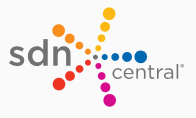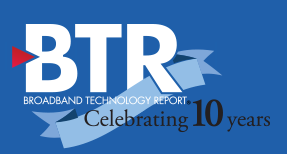LOS ALAMITOS, Calif., Nov. 25, 2014 /PRNewswire-iReach/ -- Software-defined networking will give administrators unprecedented flexibility, increasing control of network traffic and applications and taking management down to a granular level. The promise of SDN is so great that IDC estimates that the global market for SDN will increase eightfold to US $8 billion by 2018.
News
Progress on Software-defined Networking Standardization Explored in Computer, IEEE Computer Society's Flagship Magazine
11 Top Science & Technology Research Labs
The University of New Hampshire InterOperability Laboratory (UNH-IOL) is a neutral, third-party laboratory that tests networking and data communications products for quality assurance. According to the UNH-IOL, its facility occupies more than 32,000 square feet and houses a “multi-million dollar array of test equipment and the latest devices from member companies.” These companies exchange their devices and support for interoperability and conformance testing against other vendors’ devices at the lab. The lab also provides hands-on experience to the UNH graduate...
Interview: The future for NVMe technology, and how UNH-IOL advances its progress
Recent product announcements prove the NVMe (NVM Express) revolution is underway and is expected to continue with a wave of new products hitting the market in the coming months. Through its NVMe Testing Consortium, the University of New Hampshire InterOperability Laboratory (UNH-IOL) gives subsystem vendors, silicon vendors, IP companies and enterprise storage companies an early, competitive advantage to test and prepare their NVMe products for market prior to the widespread introduction of NVMe SSDs.
Non-Members Now Able to Receive ONF Conformance Testing
The Open Networking Foundation (ONF) is opening up its OpenFlow Conformance Testing Program to non-members as of today, with the aim of extending the software-defined networking (SDN) ecosystem.
ONF Expands OpenFlow Compliance Testing
The Open Networking Foundation, an SDN advocacy organization, today announced it's opening its conformance testing program to non-members. The change should make it easier for carriers to find OpenFlow-compliant hardware and software, as well as making it easier for conformance testing labs to make money.
The future for NVMe technology, and how UNH-IOL advances its progress
Recent product announcements prove the NVMe (NVM Express) revolution is underway and is expected to continue with a wave of new products hitting the market in the coming months. Through its NVMe Testing Consortium, the University of New Hampshire InterOperability Laboratory (UNH-IOL) gives subsystem vendors, silicon vendors, IP companies and enterprise storage companies an early, competitive advantage to test and prepare their NVMe products for market prior to the widespread introduction of NVMe SSDs.
SerialTek Adds NVMe Support for BusXpert Analyzers
SAN JOSE, Calif., Nov. 11, 2014 /PRNewswire/ -- SerialTek, a leader in storage protocol analysis, improves upon the capabilities of its analysis solutions for PCI Express (PCIe) technology today with the announced availability of Non-Volatile Memory Express (NVMe) support. Unlike the Serial Attached SCSI (SAS) and Serial ATA (ATA) storage specifications designed for spinning drives, NVMe is a high performance protocol architected specifically for devices and systems that utilize flash and other solid-state memory storage.
G.fast on the Fast Track
The telephone industry wasn't kidding when it named the newest version of its digital subscriber line (DSL) technology G.fast. Indeed, it's fast in two ways: The speed at which it delivers data over copper and the timeline the telephone industry is employing to bring it to market.
G-fast Chips: Market Shares, Strategies, and Forecasts, Worldwide, 2014 to 2020
LEXINGTON, Massachusetts (November 1, 2014) - WinterGreen Research announces that it has published a new study G.fast Chips: Market Shares, Strategy, and Forecasts, Worldwide, 2014 to 2020. The 2014 study has 256 pages, 109 tables and figures. Worldwide G.fast Chip markets are increasingly diversified, poised to achieve significant growth as broadband is used in every industry segment.
Boot Testing for Flash Usability
Non-volatile flash memory (NVMe) has been used to increase the performance of high-end servers for years, notably pioneered by Fusion IO. Today, NVMe is becoming the preferred technology for flash storage and the all-flash datacenter. As NVMe adoption increases, other elements of usability will allow this technology to increase its reach beyond the datacenter, including its use as a boot device.








